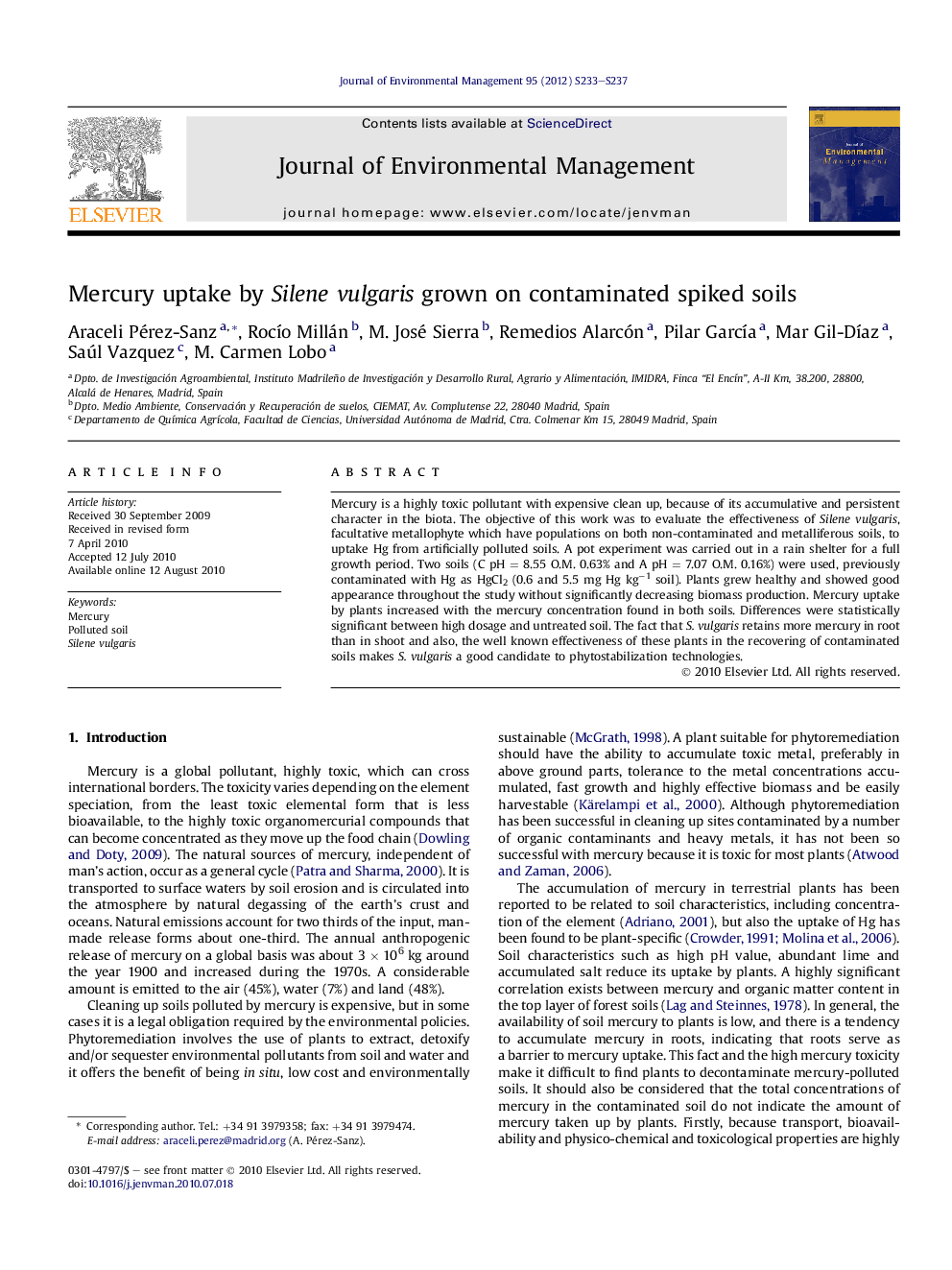| Article ID | Journal | Published Year | Pages | File Type |
|---|---|---|---|---|
| 1057059 | Journal of Environmental Management | 2012 | 5 Pages |
Mercury is a highly toxic pollutant with expensive clean up, because of its accumulative and persistent character in the biota. The objective of this work was to evaluate the effectiveness of Silene vulgaris, facultative metallophyte which have populations on both non-contaminated and metalliferous soils, to uptake Hg from artificially polluted soils. A pot experiment was carried out in a rain shelter for a full growth period. Two soils (C pH = 8.55 O.M. 0.63% and A pH = 7.07 O.M. 0.16%) were used, previously contaminated with Hg as HgCl2 (0.6 and 5.5 mg Hg kg−1 soil). Plants grew healthy and showed good appearance throughout the study without significantly decreasing biomass production. Mercury uptake by plants increased with the mercury concentration found in both soils. Differences were statistically significant between high dosage and untreated soil. The fact that S. vulgaris retains more mercury in root than in shoot and also, the well known effectiveness of these plants in the recovering of contaminated soils makes S. vulgaris a good candidate to phytostabilization technologies.
